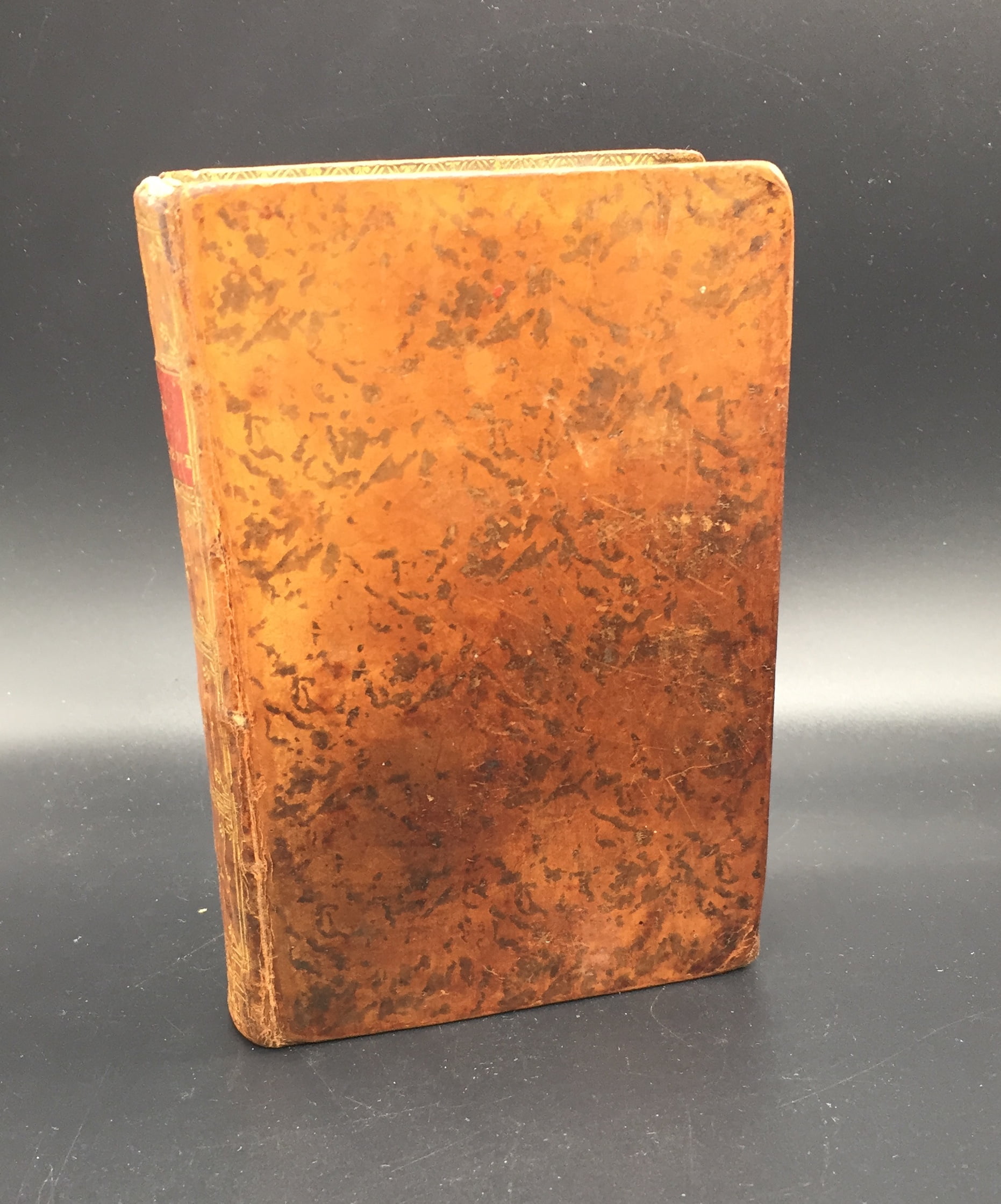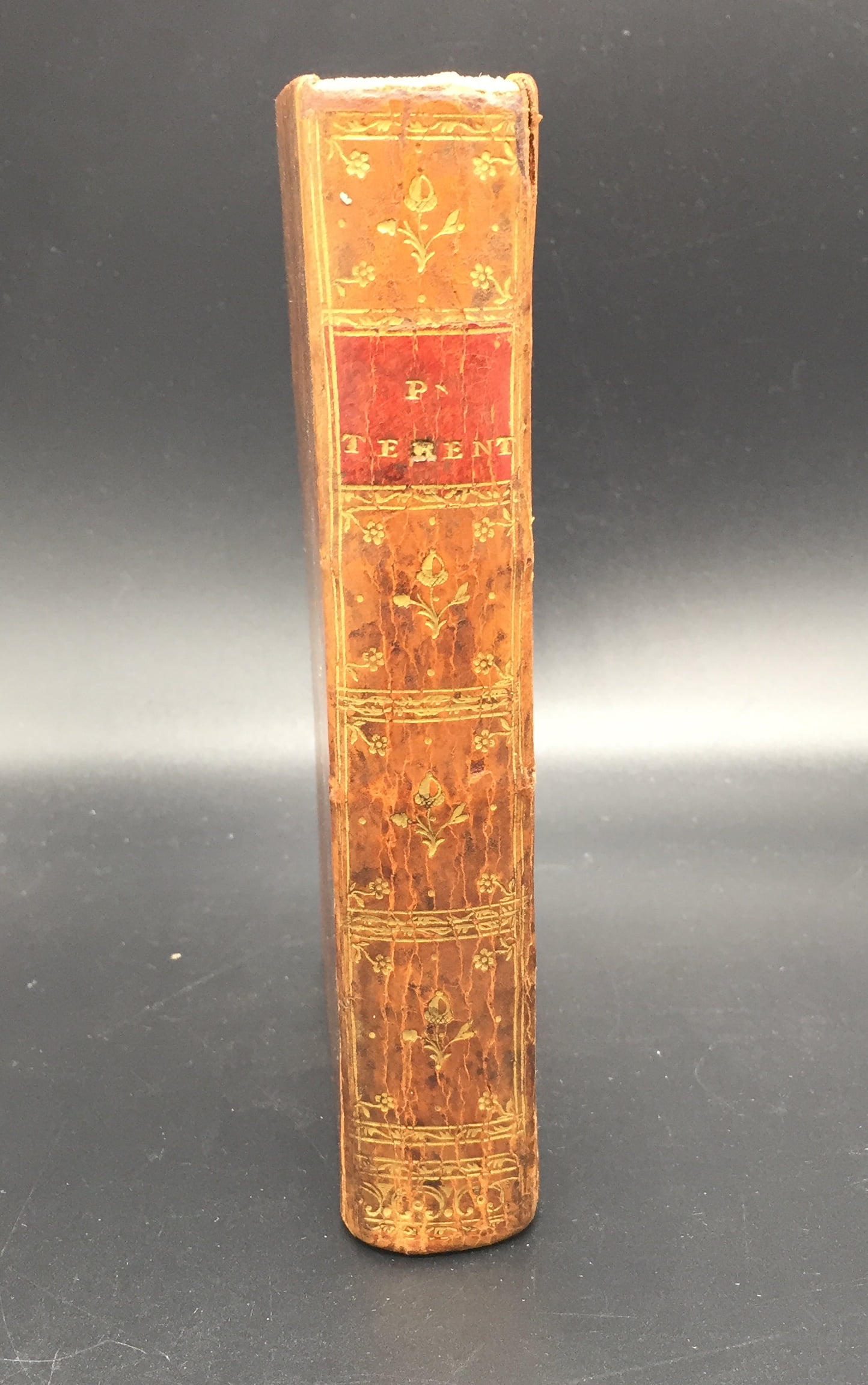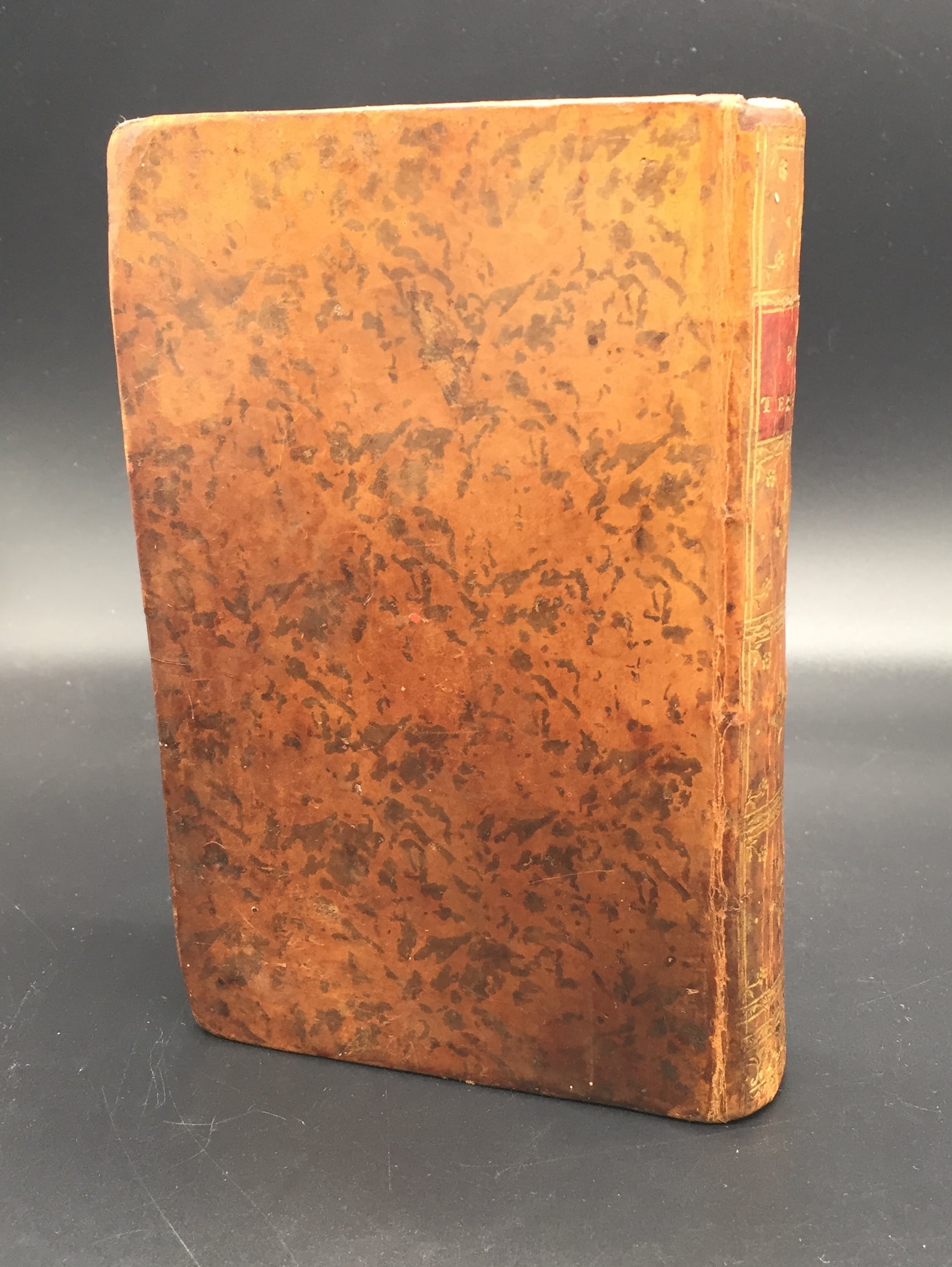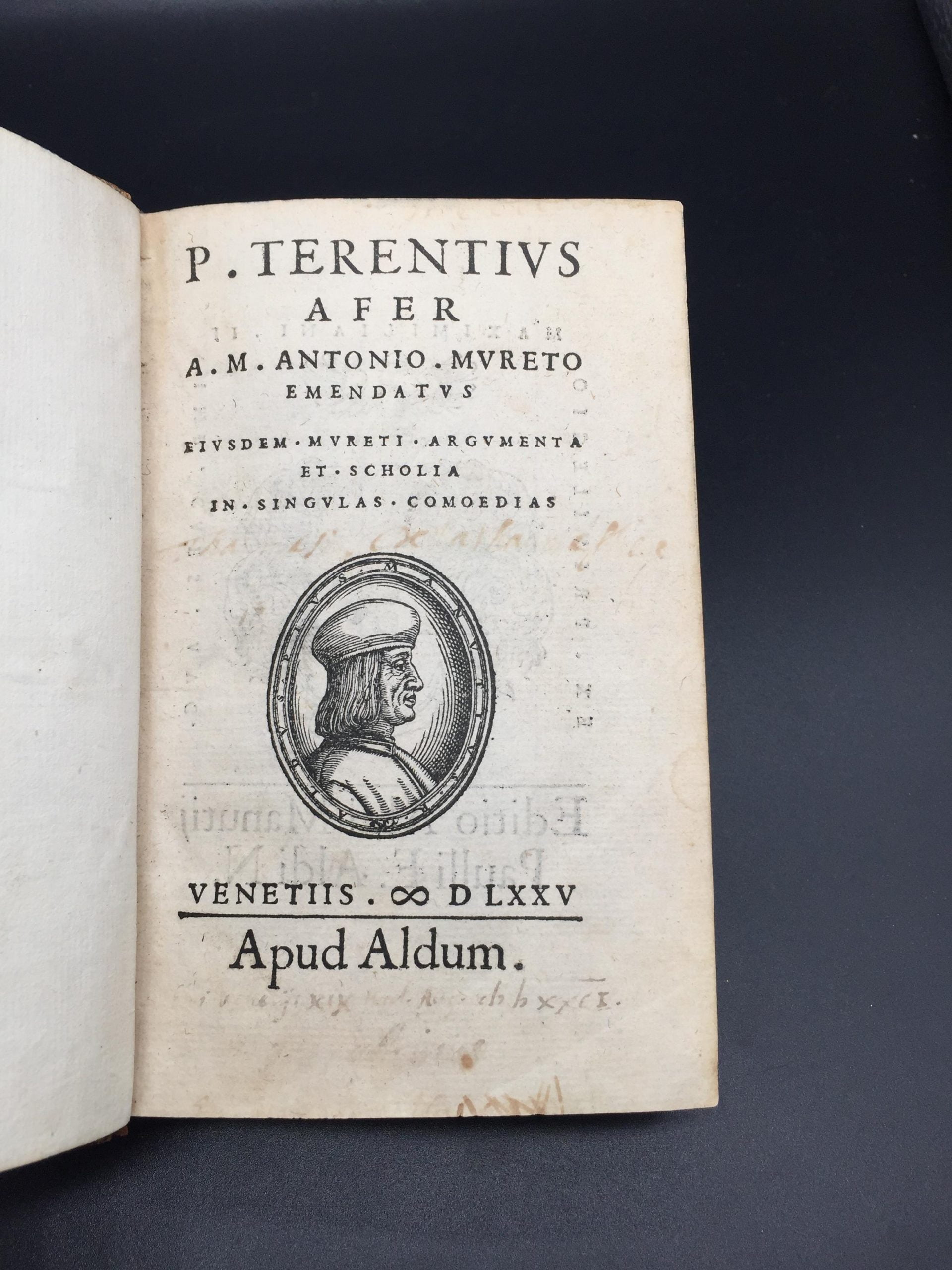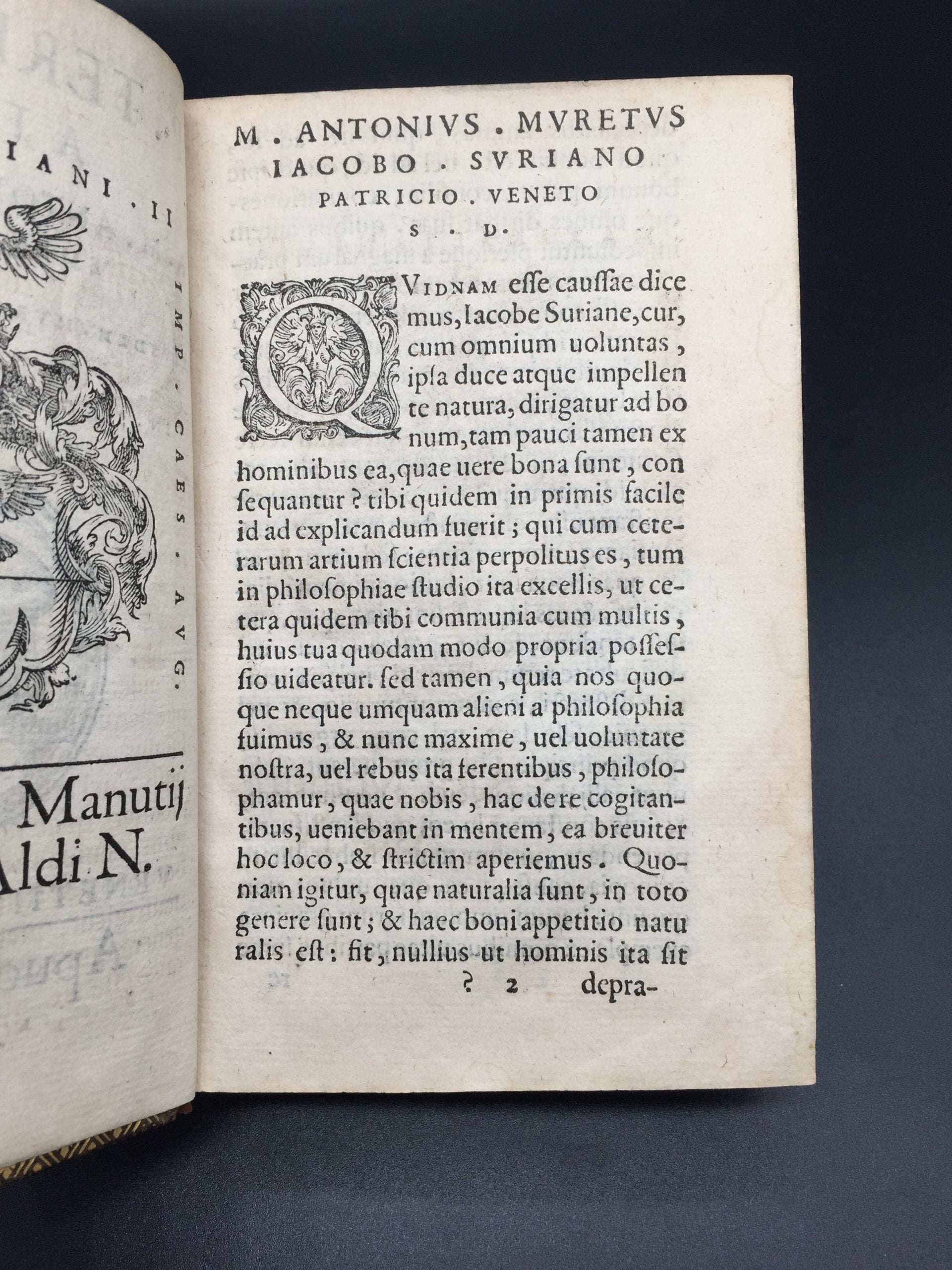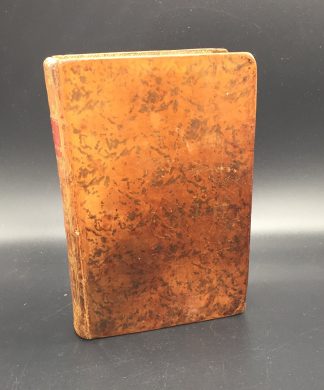TERENCE
[Comedies]. A.M. Antonio Mureto emendatus eiusdem Mureti argumenta et scholia in singulas comoedias.
Venice, apud Aldum, 1575£2,350.00
8vo. pp. (xlviii) 45 (iii), 352, 94. Italic letter, little Roman or Greek. Woodcut oval portrait of Aldus the Elder to t-p, woodcut device of Aldus the Younger on verso, woodcut initials and ornaments. Age yellowing, a bit trimmed at upper edge, small ink splashes to one leaf, marinal spot to verso of last. A good, clean copy in early C18 French mottled calf, marbled eps, spine gilt in five compartments, gilt large acorn and floral cornerpieces to each, gilt-lettered morocco label, inner edges gilt, all edges sprinkled blue, wear to head of spine and corners. C18 bookplate of the Library of the Marquis de Sainte Croix to front pastedown, the odd, partly faded C16 annotation or underlining.
A good, clean copy of this much-praised edition of Terence’s comedies by the renowned humanist Marc-Antoine Muret. ‘It is the most estimable as it is of very neat execution, and […] because the new Scholia, added as a supplement to the Aldine of 1570, are here put in place’ (Renouard 219:13). Publius Terentius Afer (195/185-c.159BC), of Berber origins, was acquired as a slave by a Roman senator, educated in Rome and later freed thanks to his skills. His six comedies survived the medieval period in hundreds of manuscripts; they were widely used to teach Latin well into the C16, and they provided the model for the earliest ‘comoediae sacrae’, a new genre inspired by the Reformation. In 1570, Paulus Manutius had commissioned new ‘scholia’ from the Neo-Latin poet and classicist Muret (1526-85), adding them as an appendix to the Terentian text. This edition includes a life of Terence, critical preliminary material based on the writings of Aelius Donatus, and Muret’s ‘scholia’, with very few revisions to the previously-printed text. The young Aldus had even suggested the addition of a woodcut portrait of Terence from a book at the Vatican Library; the ever-critical Muret replied that he should ‘focus on serious and important things: good paper, good typeface and, most of all, accurate revisions’ (Dejob, ‘Marc-Antoine Muret’, 483-85).
In 1581, an early owner noted down lines from the plays on this copy; later, it was in the possession of Marie Louis Henri d’Escorches de Sainte-Croix (1749-1830), officer, minister and French diplomat at Constantinople.
Ahmanson-Murphy 884; BM STC It., p. 665; Brunet V, 714; Renouard 219:13; Dibdin II, 471. C. Dejob, Marc-Antoine Muret (Paris, 1881).In stock


